No Place Like Home
Something very unusual happened when David Pollard started his presentation at Pecha Kucha Night Vol.58 in January. The background noise of people milling and talking at the bar stopped. Total silence descended. It was something about the first pictures that dominated the screen – a man in a forest with a small structure made out of twigs and branches, a structure natural but also unmistakably a house. It was a “home” in the truest sense of the word. David Pollard’s sincere, straightforward delivery also helped. It was so unusual that even Astrid Klein, co-founder of Pecha Kucha, said how surprised and impressed she was.
The collaboration between Japanese architect Tomonari Waku and British gardener David Pollard has produced the Natural House Project, a scheme to make buildings closer to nature and the essence of a “home”. Having made structures in Tachikawa, Kunitachi and Roppongi, their latest house will be built in Ebisu at the Yebisu Garden Place as part of a free workshop.
TABlog went to speak to the pair at their office in Kunitachi.
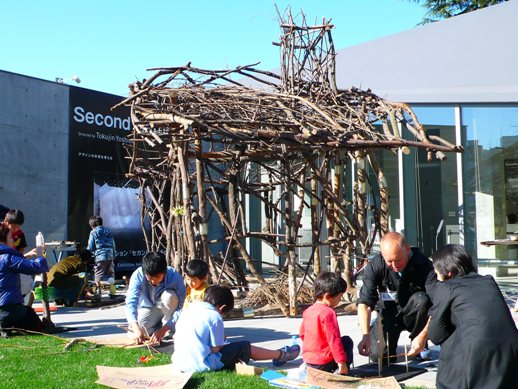
You form an interesting team. Tomonari, how did you first meet David?
Tomonari: David came to my bookshop [at the Waku Works office] with his child one year ago. He lives nearby with his wife. He showed me the photo of his Natural House in the wood. I remembered a tree in my elementary school. I used to play and climb this tree. So I was very excited about David’s photo, and I wanted to get closer to this feeling of excitement, and that’s how I started the project with David.
David: Someone said we are like brothers!
Can you tell me about the 21_21 DESIGN SIGHT project you did in 2008?
Tomonari: Originally the concept for this project was as a workshop for kids and their parents. We made a Natural House and it was put outside as an art work. For this we used sticks and branches we found locally in Roppongi. The first thing was drawing. We asked them, “What can you see around you?” For example, a big tree, a big building. “What kind of town do you want to make?” We then helped them to make a house they wanted to see.
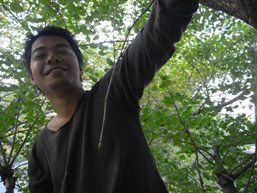
Tomonari: Doing this kind of project inside a city is more important than doing it in the woods. In the woods [as David has done in the UK] it is peaceful, harmonious. But we want to create an oasis within a city. Oasis is the concept. It is also a communication tool, allowing people to connect. You can also go inside [the Natural House]. In the summer it is very cool. Outside it is very hot but inside it is very cool.
David: One of the aims of the project is to make people communicate with each other. There’s a natural beauty in natural material. I would prefer to tap into the cosmic rules of beauty. That’s a luxury. In the real world you can’t do it; economics rules.
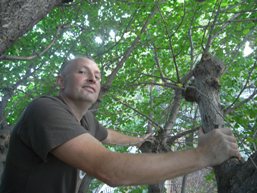
David: I started off as a bricklayer. I went to Africa in 1992. Before that I was working in New York for a few years in commercial projects; that got me interested in other ways of building, in more artistic methods. In Africa I was doing community development work. I’m just a creator! I’m very interested in Rosanjin [Kitaoji]. He believed you couldn’t be an artist in just one way. I see myself as a modern day Leonardo Da Vinci. (laughs)
But the space changes with each project. You have made Natural Houses in housing complexes, on empty land, and near a fashionable department store. And now again, in a commercial area like the Yebisu Garden Plaza.
Tomonari: Yes, each project has its own character. David made a Natural House in a wood in Birmingham. We made one on empty land [in Tachikawa]. The materials are almost the same. But each one is made different by the space it is made in. That they are all individual is interesting.
Other than the tree branches, what kind of materials do you use when making the Natural House?
Tomonari: We gather the cans from Italian restaurants. The joints are wood. I think it is important to use things nearby and close to you. David is a gardener so he prepared flowers to go in the natural house. We also used weeds from the local area.
What kind of message do your projects have for the contemporary Japanese urban lifestyle?
Tomonari: To live simply. Japanese people in the past used nearby trees to make their homes, grew their rice and ate it. Not like today, with all the imported goods, people using concrete – but we want to show that a simpler lifestyle, with fun and excitement, is good.
David: I’ve always had my eye on helping hikikomori [acute social withdrawal] in Japan.
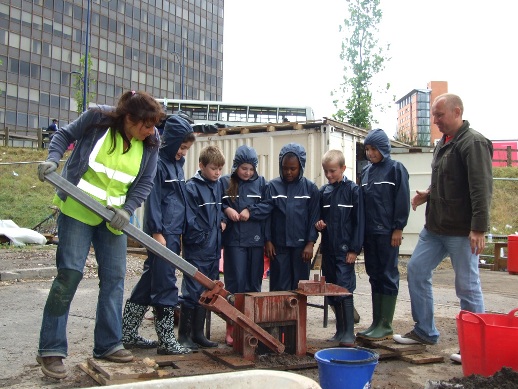
David used a brick machine in Africa to make soil bricks. You have one in Japan, right?
Tomonari: My father made it. It’s probably the first one ever in Japan.
David: You could build some of the building out of brick [using local soil]. Of course, in Japan there are earthquakes so you couldn’t build it all out of brick. You are incorporating something from that place into the building.
Are you trying to promote the use of ancient techniques and tools?
Tomonari: The most important thing is excitement. The aim is not to use old tools. You don’t just do it alone, you do it with other local people. The tool is just a means. Why is it exciting? Because it is simple.
What do you think about contemporary Japanese architecture and urban buildings?
Tomonari: I think it is okay for itself. I am not opposed to it. I think it is good that we have it, for apartments.
David: They’re a nightmare, I hate them! But it’s a practical solution to economic forces in Japan. They are what they are, but it’s not the kind of environment I would want to spend my time in. Architecture for me should really be an expression of the spirit of the place. I found myself very drawn to Japanese aesthetics like the torii gates. It was something I always respected. It has always informed a lot of the stuff I’ve done anyway. I love the way [some contemporary Japanese architects] use concrete. They would ennoble quite a harsh material like concrete or steel. I think the one thing that stands out about modern Japanese architecture is concrete.
Tomonari: We want to do these projects for more balance. Also, if electricity and raw materials were to run out, what will we do then? I like people who use basic materials. I like architecture that doesn’t just decorate but is a foundation, and creates harmony. I also really like mud houses in Africa.
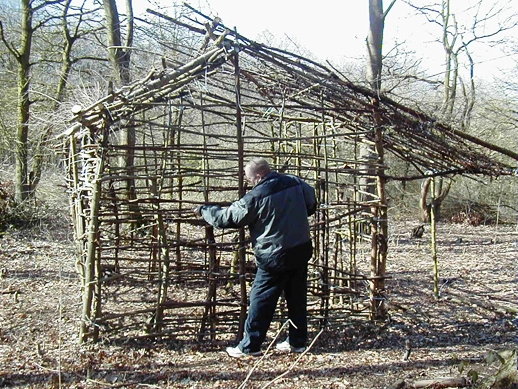
During 21_21 workshop what was the communication and atmosphere like, with children and parents, interacting with a foreign workshop leader?
Tomonari: I acted as David’s interpreter. But, it wasn’t always so necessary to give explanations. It is a simple act, a simple way of having fun – we wanted to make a workshop that did not need explanations. David has also done this workshop in England [in Birmingham]. In England, in Japan, you can do this kind of workshop anywhere. That is one of things I think is really good about this project.
David: I’ve been lucky to work in many cultures. I think we learn to communicate without languages. For me, language is never a problem for me. I’m a bit of a cultural chameleon, I blend in wherever I go. (laughs)
Tomonari: There was absolutely no unease [about David being a foreigner]. The parents were quite stylish people, people who like design and art. The parents were more enthusiastic than the children!
So far you have done three of these projects in Japan. What about your next project and after that?
Tomonari: We will present the house for one year after the workshop in Ebisu.
David: We’re picking up commercial partners to help us. It’s a two-day workshop [in Ebisu]. The Sunday should be the best.
Tomonari: Our next stage is to have a base [in Kunitachi].
David: We want to do workshops particularly with university students.
For more information on the Natural House Project, visit Waku Works.
The workshop will be held at Yebisu Garden Place in Ebisu on May 23 and 24, from 12:00 until 17:00. Participation is free and no reservation is required. After the workshops the final building will be on display for one year.
William Andrews
William Andrews



